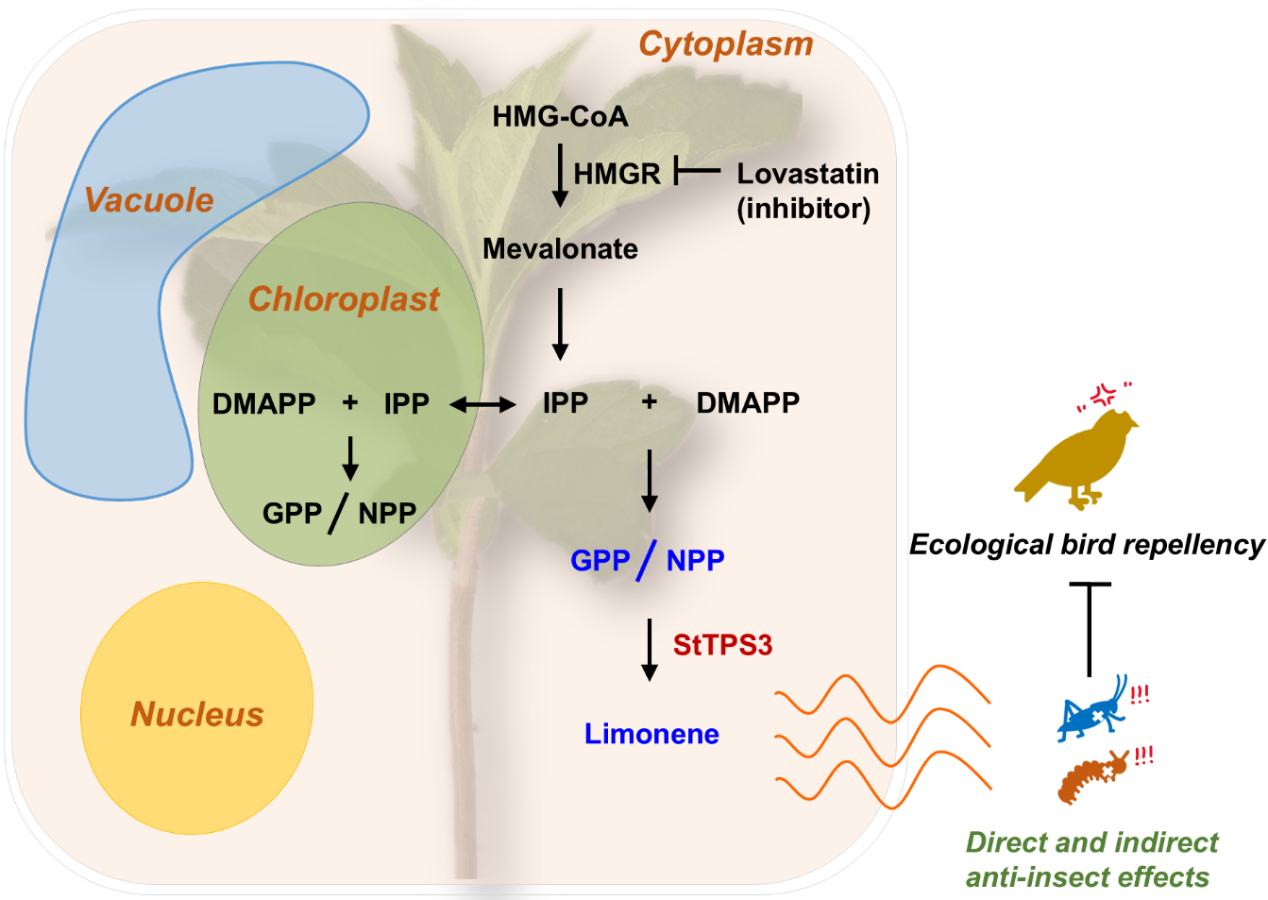New Study Identifies Key Anti-Insect Monoterpenes in Sphagneticola trilobata and Reveals Their Biosynthetic Origin
Planting Sphagneticola trilobata (L.) Pruski around airport runways is known to reduce insect density and bird activity, lowering the risk of bird strikes. Yet its insect-repelling mechanism and the biosynthesis of its active compounds have remained unclear.
New study published in the Journal of Advanced Research, titled “Inhibitor treatment and subcellular localization analysis reveal the contribution of a cytosolic terpene synthase to the substantial release of anti-insect monoterpenes by Sphagneticola trilobata (L.) Pruski)”, provides key answers.
This work revealed limonene, α-phellandrene, and p-cymene as the dominant volatile monoterpenes in S. trilobata. Together they represent more than 80% of total emissions and show strong anti-insect activity, especially against species that serve as major bird prey. Enzyme assays revealed that StTPS3, a cytosolic terpene synthase, can use both GPP and NPP to produce limonene. Inhibiting the mevalonate (MVA) pathway sharply reduced monoterpene release, suggesting the possible presence of a cytosolic monoterpene biosynthetic route.
This study is the first to link S. trilobata’s volatile chemistry with its insect-repelling function. It highlights the plant’s potential value in airport landscaping and bird-strike risk management. and green bird-strike prevention, and offers a scientific basis for developing plant-based allelopathic strategies. Article Link: https://doi.org/10.1016/j.jare.2025.01.047

Figure . Biosynthesis of key anti-insect monoterpene in Sphagneticola trilobata.(image by ZENG et al)
File Download: